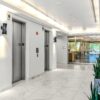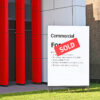The amenities that tenants want and are demanding has shifted signifanctly in recent years. The commercial real estate (CRE) industry is in a period of accelerated evolution, and tenants in 2025 are more discerning, strategic, and data-driven than ever. While traditional drivers like location and price remain foundational, a new wave of tenant expectations is reshaping how landlords and investors must approach leasing strategy, space design, and service delivery. Whether it’s a tech startup in need of flexible workspace or a medical group planning a multi-location expansion, understanding what tenants want in 2025 is essential to staying competitive in today’s market.
1. Flexibility First: Lease Terms and Space Design
The concept of long-term leases with rigid terms is quickly becoming outdated. In 2025, tenants are demanding more flexible lease structures that align with their growth and operational uncertainty. This is especially true for healthcare practices, tech firms, and growing service businesses that may experience rapid change.
Shorter lease terms, expansion/contraction rights, and options for early termination or renewal are becoming more common. Additionally, tenants want modular space layouts spaces that can be reconfigured easily without costly buildouts. Demountable walls, adaptable layouts, and shared amenities are now seen as must-haves, not bonuses.
2. Smart Building Technology and Connectivity
Tenants in 2025 expect buildings to do more than provide shelter, ttenants want buildings that think. Smart building features, from intelligent HVAC systems and energy-efficient lighting to real-time occupancy sensors and app-controlled access, are becoming non-negotiable for many occupiers.
Reliable and fast internet connectivity is now table stakes. WiredScore and other digital infrastructure certifications are becoming important differentiators. Medical users are requesting secure, redundant networks to support electronic health records (EHR) systems and telehealth.
3. Health, Wellness, and ESG Alignment
Health-conscious tenants aren’t just looking for ADA compliance – tenants want evidence that their space supports employee wellness. This includes access to natural light, air purification systems, on-site fitness options, and proximity to walking trails or green space. Properties with WELL or Fitwel certifications often gain a competitive edge.
On the environmental side, ESG (Environmental, Social, and Governance) considerations now influence leasing decisions. Tenants increasingly inquire about a building’s carbon footprint, energy sources, and sustainability metrics. LEED certification, solar power, and water conservation features are key indicators that a landlord takes ESG seriously.
4. Amenities that Add Real Value
Gone are the days when a shared breakroom counted as an amenity. In 2025, tenants look for curated, experience-driven features that help with talent retention and day-to-day efficiency. This includes:
- On-site food and beverage offerings
- Outdoor patios or workspaces
- Community programming or networking events
- Bike storage and EV charging stations
- Concierge services or wellness-focused amenities
Importantly, the trend is toward purposeful amenities that align with tenant priorities, rather than flashy extras that don’t see use.
5. Location Still Matters – But Accessibility Matters More
While location remains critical, tenants in 2025 view it through a wider lens. Proximity to talent pools, public transportation, healthcare institutions, and major freeways are more relevant than ever. For healthcare tenants, being near hospital campuses or specialty surgery centers is a significant factor in site selection.
In suburban and tertiary markets, accessibility now also means visibility. Being located in a mixed-use development, retail corridor, or near growing residential zones is increasingly important for attracting clientele.
6. Data-Driven Decisions and Transparent Negotiations
Tenants are coming to the table with more data and more expectations. They’re using online platforms and CRE analytics tools to benchmark lease rates, compare landlord reputations, and negotiate from a more informed position.
This means landlords and brokers must also elevate their game, bringing clear proformas and compelling data about building performance, demographics, and market comps.
7. Tailored Space for Specialized Use
Medical, legal, financial, and creative industries have specific needs, and one-size-fits-all space won’t cut it. Tenants want to know that landlords understand their industry and can deliver tailored buildouts or pre-configured spaces with minimal delay.
For example, medical tenants increasingly require suites designed with plumbing, exam rooms, ADA restrooms, and high load capacity, features that can’t be added without significant time and cost. Pre-planned infrastructure can be a major leasing advantage.
Final Thoughts: How the ICRE Investment Team Can Help
At the ICRE Investment Team, we don’t just follow CRE trends – we help our clients stay ahead of them. Whether you’re a landlord preparing your property for market or a tenant looking for space that aligns with your strategic goals, we bring market insight, experience, and a tailored approach to every transaction.
With a strong focus on healthcare, office, and investment properties across Arizona, our team leverages national exposure, data-backed strategies, and industry relationships to deliver results. From flexible lease structuring to tenant rep services and site selection, we’re here to help you navigate the shifting landscape of 2025 and beyond.
Let’s connect and talk about how we can help you succeed in today’s evolving commercial real estate environment.
















